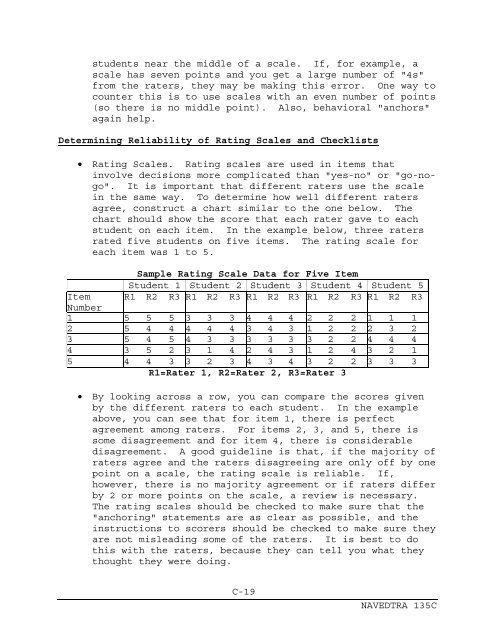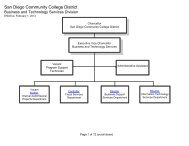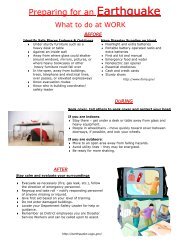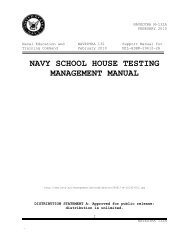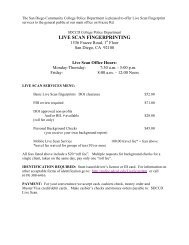NAVY SCHOOL MANAGEMENT MANUAL
NAVY SCHOOL MANAGEMENT MANUAL - AIM
NAVY SCHOOL MANAGEMENT MANUAL - AIM
- No tags were found...
Create successful ePaper yourself
Turn your PDF publications into a flip-book with our unique Google optimized e-Paper software.
students near the middle of a scale. If, for example, a<br />
scale has seven points and you get a large number of "4s"<br />
from the raters, they may be making this error. One way to<br />
counter this is to use scales with an even number of points<br />
(so there is no middle point). Also, behavioral "anchors"<br />
again help.<br />
Determining Reliability of Rating Scales and Checklists<br />
<br />
Rating Scales. Rating scales are used in items that<br />
involve decisions more complicated than "yes-no" or "go-nogo".<br />
It is important that different raters use the scale<br />
in the same way. To determine how well different raters<br />
agree, construct a chart similar to the one below. The<br />
chart should show the score that each rater gave to each<br />
student on each item. In the example below, three raters<br />
rated five students on five items. The rating scale for<br />
each item was 1 to 5.<br />
Sample Rating Scale Data for Five Item<br />
Student 1 Student 2 Student 3 Student 4 Student 5<br />
Item R1 R2 R3 R1 R2 R3 R1 R2 R3 R1 R2 R3 R1 R2 R3<br />
Number<br />
1 5 5 5 3 3 3 4 4 4 2 2 2 1 1 1<br />
2 5 4 4 4 4 4 3 4 3 1 2 2 2 3 2<br />
3 5 4 5 4 3 3 3 3 3 3 2 2 4 4 4<br />
4 3 5 2 3 1 4 2 4 3 1 2 4 3 2 1<br />
5 4 4 3 3 2 3 4 3 4 3 2 2 3 3 3<br />
R1=Rater 1, R2=Rater 2, R3=Rater 3<br />
<br />
By looking across a row, you can compare the scores given<br />
by the different raters to each student. In the example<br />
above, you can see that for item 1, there is perfect<br />
agreement among raters. For items 2, 3, and 5, there is<br />
some disagreement and for item 4, there is considerable<br />
disagreement. A good guideline is that, if the majority of<br />
raters agree and the raters disagreeing are only off by one<br />
point on a scale, the rating scale is reliable. If,<br />
however, there is no majority agreement or if raters differ<br />
by 2 or more points on the scale, a review is necessary.<br />
The rating scales should be checked to make sure that the<br />
"anchoring" statements are as clear as possible, and the<br />
instructions to scorers should be checked to make sure they<br />
are not misleading some of the raters. It is best to do<br />
this with the raters, because they can tell you what they<br />
thought they were doing.<br />
C-19<br />
NAVEDTRA 135C


